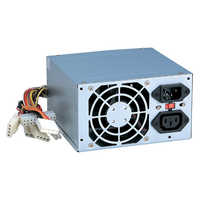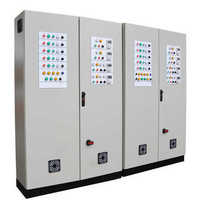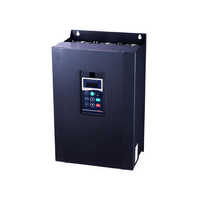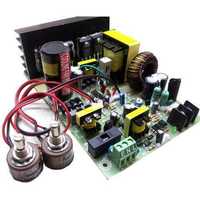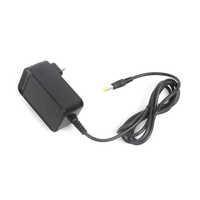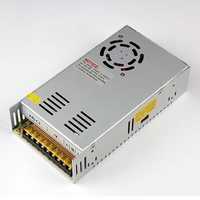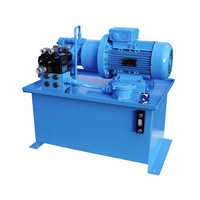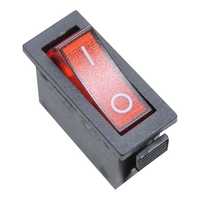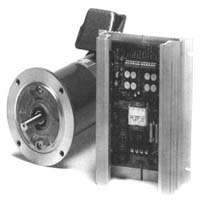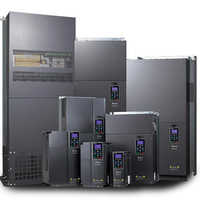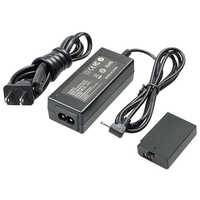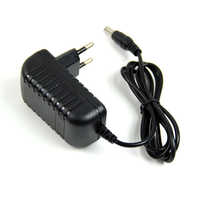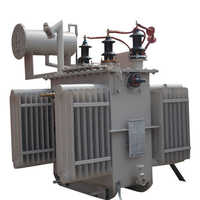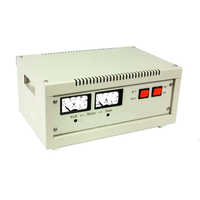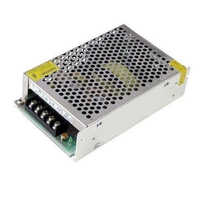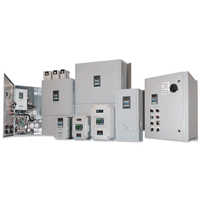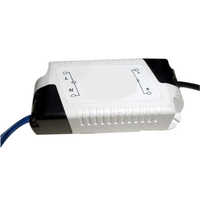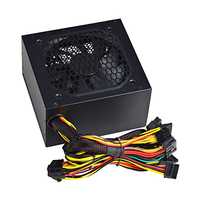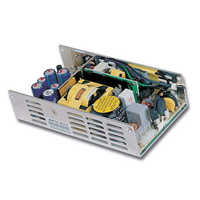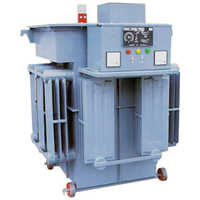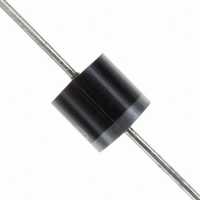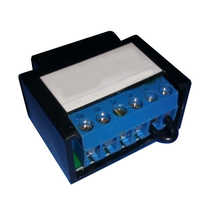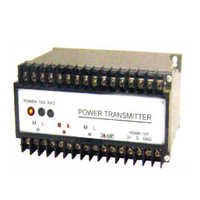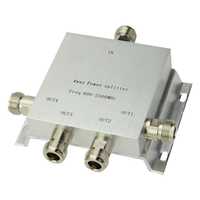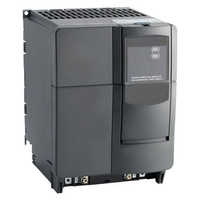Power Supplies
(6703 products)
Top Power Supplies Categories
Explore More Categories
Made in India
Bpl Pipe Clamp Application: Electricity
Price Trend: 45.00 - 100.00 INR (Approx.)/Piece
MOQ - 10000 Piece/Pieces
Application - Electricity
Material - Iron
Weight - 5-20 Kilograms (kg)
15 Years
Business Type: Manufacturer | Exporter
SANJAY CASTING & ENGINEERING COMPANY
Ps-50T 12Vdc-20 Amp Power Supply With Cable Compensation Switch Application: Industrial
Price: 2,190 INR (Approx.)/Piece
MOQ - 50 Piece/Pieces
Output Type - Multiple
Rated Current - 20 Ampere (amp)
Phase - Three Phase
2 Years
Business Type: Manufacturer | Supplier
ERD TECHNOLOGIES PRIVATE LIMITED
Indian Inquiries Only
Made in India
Top Mounted Electric Level Switch
11 Years
Business Type: Manufacturer | Exporter
KABIR INSTRUMENTS AND TECHNOLOGY
Made in India
DC Power Supply
6 Years
Business Type: Manufacturer | Distributor
ALAN ELECTRONIC SYSTEMS PVT. LTD.
Power Panels
9 Years
Business Type: Manufacturer | Supplier
ZARAL ELECTRICALS
Made in India
Autonics Smps(Switching Mode Power Supplies) Spb-240-24 Input Voltage: 100-240 Volt (V)
Price: 12000 INR (Approx.)/, Piece
MOQ - 1 , Piece/Pieces
Rated Current - 10 Ampere (amp)
Output Type - DC
Product Type - Switching Mode Power Supply
14 Years
Business Type: Manufacturer | Distributor
FUTURISTIC TECHNOLOGIES
Indian Inquiries Only
Made in India
Power Supply
4 Years
Business Type: Manufacturer | Exporter
EXCELLA ELECTRONICS
Made in India
Smps Power Supply Application: Industrial
Price: 2500 INR (Approx.)/Unit
MOQ - 1 Unit/Units
Phase - Single Phase
Rated Current - 30 Ampere (amp)
Application - Industrial
5 Years
Business Type: Manufacturer | Supplier
NANO TECHNOLOGIES
Indian Inquiries Only
Made in India
Lrs 350 5 Single Output Switching Power Supply Efficiency: 83.5%
Price: 2200 INR (Approx.)/Piece
MOQ - 10 Piece/Pieces
Product Type - LRS 350 5 Single Output Switching Power Supply
Output Power - 350 Watt (w)
Input Voltage - 264 Volt (V)
3 Years
Business Type: Exporter | Trading Company
NETWORK INC
Made in India
Dc Programmable Power Supply Application: Medical
Price: 986000 INR (Approx.)/Number
MOQ - 1 Number
Rated Current - 15AMP Ampere (amp)
Output Type - Single
Current Range - 0-15AMP Ampere (A)
6 Years
Response Rate: 88.14%
Business Type: Manufacturer | Exporter
POWERTRON INDIA PRIVATE LIMITED
Made in India
Plastic Ionization Flame Monitor
Price: 4500 INR (Approx.)/Piece
MOQ - 1 Piece/Pieces
Phase - Single Phase
Condition - New
Material - Plastic
19 Years
Business Type: Manufacturer | Trading Company
DILIGENT MICRO CONTROLS
Indian Inquiries Only
Made in India
ESR Supplies
Price Trend: 10000.00 - 100000.00 INR (Approx.)/Set
MOQ - 1 Set/Sets
18 Years
Business Type: Manufacturer | Exporter
MANGAL ENGINEERS & CONSULTANTS
Made in India
Asda-B Ac Servo System
1 Years
Business Type: Manufacturer | Distributor
Cess Automation India LLP
Made in India
Servo Drive
Price Trend: 90000 - 250000030000 INR (Approx.)/Unit
MOQ - 1 Unit/Units
18 Years
Business Type: Manufacturer | Exporter
LAKSHMI ELECTRO CONTROLS & AUTOMATION
Indian Inquiries Only
Made in India
Invt Servo Drive Phase: Three Phase
Price: 16000 INR (Approx.)/Unit
MOQ - 2 Unit/Units
Phase - Three Phase
Product Type - Invt Servo Drive
12 Years
Business Type: Service Provider | Trading Company
ZENTECH AUTOMATION
Indian Inquiries Only
Made in India
White Plastic 2 Pin Universal Adaptor Usb-028
Price: 212.00 INR (Approx.)/Piece
MOQ - 10 Piece/Pieces
Phase - Single Phase
Application - Electronic Equipment
Color - White
14 Years
Business Type: Manufacturer | Distributor
GIFTMART
World Travel Adaptor with Surge Protection (Round)
Price: 123.50 INR (Approx.)/Piece
MOQ - 100 Piece/Pieces
Weight - 100 Grams (g)
7 Years
Business Type: Manufacturer | Exporter
JAINEX CORPORATE GIFTS
Made in India
Micro Drives
1 Years
Business Type: Manufacturer | Exporter
PSP TECHNO ENGINEERS PVT. LTD.
Indian Inquiries Only
Made in India
Power Supply
15 Years
Business Type: Manufacturer | Exporter
LEELAVATI AUTOMATION PVT. LTD.
Indian Inquiries Only
AC Drive
3 Years
Business Type: Manufacturer | Supplier
TECHNOSOFT CONSULTANCY & SERVICES
Made in India
Hilectro Servo Drive Application: Industrial
Price: 176000 INR (Approx.)/Piece
MOQ - 1 Piece/Pieces
Output Type - Single
Rated Power - 2 HP
Application - Industrial
2 Years
Business Type: Trading Company
Durga Hydraulics
Made in India
Hydraulic Power Pack
4 Years
Business Type: Manufacturer | Exporter
AIRCON PNEUMATICS
Made in India
Transmitter Power Supply
3 Years
Business Type: Manufacturer | Supplier
ELECTRONET EQUIPMENTS PVT. LTD.
Made in India
Siemens Drives Output Type: Dual
Price: 35,000 INR (Approx.)/Piece
MOQ - 1 Piece/Pieces
Phase - Single Phase
Output Type - Dual
Product Type - Siemens 220 V Servo Drives
2 Years
Business Type: Manufacturer | Distributor
Mechatron System Pvt Ltd
Elevator Power Supply Unit Phase: Three Phase
MOQ - 1 Piece/Pieces
Phase - Three Phase
5 Years
Business Type: Supplier | Exporter
KSD EQUIPMENTS PRIVATE LIMITED
Made in India
Single Phase Pmdc Drive Input Voltage: 230 Volt (V)
Price: 4000 INR (Approx.)/Box
MOQ - 1 Box/Boxes
Working Temperature - ambient Celsius (oC)
Output Type - DC
Phase - Single Phase
9 Years
Business Type: Manufacturer | Supplier
J. D. AUTOMATION
Made in India
MEAN WELL RS-25-5
Price Trend: 3000.00 - 9000.00 INR (Approx.)/Unit
MOQ - 1 Unit/Units
8 Years
Business Type: Manufacturer | Distributor
SKYLAKE AUTOMATION
Made in India
12V 3AMP
Price: 130.00 INR (Approx.)/Piece
MOQ - 50 Piece/Pieces
Phase - Single Phase
Current Range - 3 Ampere (A)
Output Current - 12V Volt (v)
2 Years
Business Type: Manufacturer | Supplier
The True Vision Enterprises
Power Supplies Manufacturers | Suppliers in India
| Company Name | Location | Member Since |
|---|---|---|
| Diligent Micro Controls | Thane, India | 19 Years |
| Mangal Engineers & Consultants | Ludhiana, India | 18 Years |
| Lakshmi Electro Controls & Automation | Bengaluru, India | 18 Years |
| Sanjay Casting & Engineering Company | Howrah, India | 15 Years |
| Leelavati Automation Pvt. Ltd. | Mumbai, India | 15 Years |
| Futuristic Technologies | Ahmedabad, India | 14 Years |
| Giftmart | Mumbai, India | 14 Years |
| Zentech Automation | Delhi, India | 12 Years |
| Kabir Instruments And Technology | Vadodara, India | 11 Years |
| Zaral Electricals | Vadodara, India | 9 Years |
Power Supply: Overview
A power supply is any device that takes an alternating current (ac) power line's output and produces a continuous direct current (dc) output or numerous dc outputs. In order to get a steady dc voltage, the ac one must first be rectified into a pulsating dc one, and then filtered.
One definition of a power supply is a device that generates and distributes electrical current to one or more electric loads. It often changes one form of electrical power into another, but it can also change other forms of energy, including solar, mechanical, or chemical, into electrical power.
Electrical energy is delivered to devices via a power source. This word typically refers to components that are built into the item being powered. In most desktop PCs, the power supply is situated in the back of the casing, along with a fan, and is responsible for converting AC power to DC power.
The Function of Power Supplies
The power supply is responsible for changing the voltage from the AC or DC mains (often 110 V in North America and 220-240 V in much of Europe) to the DC voltage level required by the device being powered. Power supplies are responsible for supplying energy to the system, typically via a DC voltage bus that is generated by an initial converter. The voltage is then further reduced at the point of load (PoL) or usage with a point of load (PoU) converter. However, the input and output voltages can affect the power rating of a power supply, making it possible for the power rating to fluctuate.
The power handling capacity of some converters is specified both for natural cooling and for forced air cooling. You must guarantee that the power converter can supply the necessary power to the load. Filtering elements are typically a part of power converters and are used to smooth out the energy going into and coming out of the converter. This safeguards the supply, components, and equipment at the expense of higher losses, but without smooth power, some devices may exhibit unpredictable behavior. Naturally occurring convection and conduction cooling methods are sufficient for some power supplies. Forced cooling, however, is necessary for some power sources.
A common method of cooling power supplies is called forced air cooling; in this method, a fan is used to move air through the power supply; this fan is typically housed on the power supply itself, though a system fan can also be utilized.
The Importance of Power Supply
Here is the importance of power supply:
1. Busy Time
Having access to a power source is a crucial component of any emergency kit. Having a simpler UPS on hand will assist smooth over to the generator if you already have a standby emergency generator. In addition, it affords you a substantial amount of time in which to plot your subsequent moves. You have the option of either waiting it out and carrying on as usual, or beginning a controlled shutdown of selected pieces of equipment.
2. Improves Business Efficiency
In the event of an electrical outage at work, repairing the damage may take a considerable amount of time. However, if you have a battery backup, you won't have to worry about surges causing expensive downtime. Power outages can cause a number of problems, and if you invest in a UPS, you can avoid many of them.
3. Protects Your Tech
There isn't much that has to happen for lightning to fry your gear and perhaps wipe out your company's crucial data and IT systems. In the event of a power outage, the power supply will immediately switch over to the battery backup and will also insulate your devices from the main voltage.
4. Maintains Business
In the event of a power outage, having a battery backup system in place might be invaluable to your business. Power fluctuations, no matter how slight, can transform an otherwise normal day into a chaotic nightmare, making it hard to do business during a blackout or brownout. With a power supply, your most important machinery will be safe from blackouts. Everything from assembly lines in a factory to PCs in an office can keep running even if the power goes out.
5. Normalizes the Power Supply
Power outages can be caused by more than just a severe thunderstorm. Voltage fluctuations can also be brought on by other, more unexpected sources, such as utility or vehicle accidents, and can have a negative impact on your electronic devices. Power filters and stabilizers can assist smooth out power fluctuations. Consequently, there is less risk of losing data during power outages and surges, and equipment lasts longer.
Uses of Power Supply
A computer's internal components run on low-voltage, regulated DC power provided by a power supply unit (PSU), which transforms power from the wall outlet. Switched-mode power supplies are standard in today's computers. Input voltage can be selected manually on some power supplies, while automated adaptation is featured on others.
1. Medical Power Supplies
By releasing the 40-W ML40 and 65-W ML65, N2Power widened its selection of medical-grade power supplies. The most recent UL/EN 60601 health certifications have been achieved by both series.
They are rated 2 × MOPP, a defined in a section that important thing is to ensure from shocks by ensuring that gadgets have two redundant measures of protection that offer isolation for up to 4,000 VAC, stated the manufacturer.
Both versions have power efficiencies of up to 93.5%, making them ideal for uses such as medical ventilators by reducing the amount of heat generated and the consequent demand for cooling fans. Low power usage in standby mode is another feature.
2. Industrial Power Supplies
The Manufacturing companies provide a weatherproof 250-W AC/DC power supply for industrial applications that need to withstand stress, vibration, and extreme weather. A ruggedized, waterproof casing and thermal design make the LHC Series suitable for harsh environments.
The LHC series is designed to function in environments with temperatures ranging from -20 degrees Celsius to 50 degrees Celsius, thanks to its air-cooled, ruggedized IP67-rated casing. An extruded aluminum casing is used to create the housing, and it is sealed off with a thermally conductive substance.
The power supply can function in situations with fluid, chemicals, dust, and sand thanks to the enclosed casing. Manufacturing, automated assembly lines, and outdoor advertising are just a few examples of possible uses.
You can shop for AC-DC power supply in the following formats:
3. Wall-Mount Adapter
The energy source is drawn from the outside. The electrical plug is either permanently attached or removable. There are also a number of different DC jack types.
4. Desktop Adapter
The power comes from somewhere else. Both Class II and Class I AC inlets may be used in this situation (with the ground). Different kinds of DC plugs can be used, too.
5. Open-frame Power Supply
There's no need for an external power source, as it's self-sufficient. PCB mountable type (pin) and wafer type components are both possible here (connector).
6. Encapsulated Power Supply
Whether the power source is internal or external depends on the intended use. PCB mountable type (pin) and wire type components are both possible here.
7. Enclosed Power Supply
There's no need for an external power source, as it's self-sufficient. The metal-cased power supplies can be found here.
8. Din-Rail Power Supply
There's no need for an external power source, as it's self-sufficient. Find power supplies with a metal case and screw terminals here.
In addition, depending on their characteristics, power supplies can be classified as either unregulated power supplies or adjustable power supplies, adjustable regulated power supplies, non-isolated power supplies, isolated power supplies or regulated power supplies, and adjustable power supplies or adjustable regulated power supplies.
In addition, power supplies can be loosely classified as either being of the linear or switching mode variety. The idea behind the design of linear power supply dates back further than the current trend in product design, which seeks to minimize the product, and does not fit into this trend at all.
Programmable power supplies often make use of an essential microcomputer to manage and monitor the power supply's day-to-day operation. This can be accomplished through a user interface by employing either private or standard protocols.
FAQs: Power Supply
Q. Which type of power supply is the most commonly used?
Ans. Single-phase AC transformer is the most commonly used power supply.
Q. What is a power supply for example?
Ans. This device inverts the high primary voltage from the wall outlet into the safe secondary welding voltage range of 2-20 V. for example the power supply, which is responsible for converting AC electricity into DC current, is typically housed at the back of the computer casing with a fan.
Q. What are the 3 types of the power supply?
Ans. Here are the 3 basic types:
1. Switched Mode Power Supply
2. Uninterruptible Power Supply UPS
3. AC Power Supply
Related Categories
Brass Electrical & Electronic Components
Bulbs & Tubelight
Cable Terminal, Lugs & Socket
Cable Trays
Cables/Cable Accessories & Conductors
Calculator
Capacitors
Chargers
Circuit Boards
Circuit Breaker
Commercial Field
Control Panel Boards
Dc Power Supplies
Decorative Lights
Diesel Generator Sets
Doorbell
ESD Products & Equipment
Earthing Electrodes
Electric Motors & Engines
Electric Power Tools
Electrical / Lighting Products & Components
Electrical Enclosures
Electrical Goods, Equipment & Supplies
Electrical Outlets
Electrical Product Agent
Electrical Safety Products
Electrical Testing & Measuring Equipment
Electrical Transmission Line Goods
Electro Magnets
Electro Stampings
Electronic Data Systems
Electronic Enclosures
Electronic Instrument
Electronic Liquid Level Controllers & Indicators
Electronic Products & Components
Electronic Safe
Electronic Signs & Sign Board
Electronic Testing Equipment
Electronics Agents
Electronics Stocks
Emergency & Safety Lights
Energy Saving Devices
Fibreglass Cable
Financial Field
Flashlights
Flood Light
Frames & Display
Generator Parts & Accessories
Generators
Heat Resistance Wire
Home Automation Systems
Industrial Automation
Insulation Material
Insulation Paper
Inverters & Ups Equipment
Jacks
LED Displays
LED Products
Lamps & Lampshades
Laser
Light Fittings & Fixtures
Lightning Protection System
Mobile Phones, Accessories & Parts
Outdoor Lighting
Plastic Enclosures
Plastic Welding Equipment
Power Cable Accessories
Power Supplies
Power Transmission Equipment
Pressure Switches
Public Address Systems
Radio & TV
Radio & TV Equipment
Rectifiers
Relays
Residential Lighting
Semiconductors
Sensors
Speakers & Speaker Parts
Stainless Steel Wires & Cables
Switchboard
Switches
Switchgear & Allied Products
TV Picture Tubes
Transformer & Transformer Components
Turbine
Voltage Stabilizers
Water Heater
Welding Equipment
Wires/Cables & Accessories
Wiring Harness
